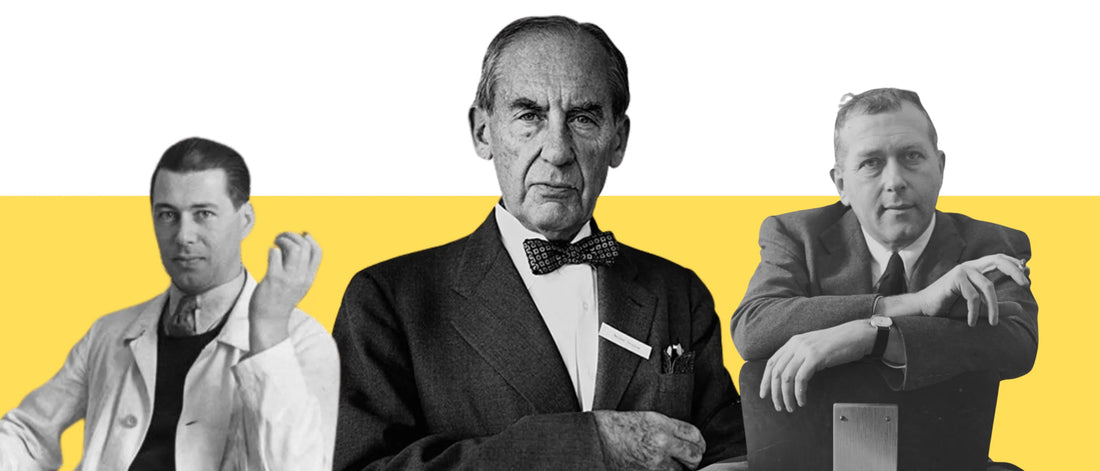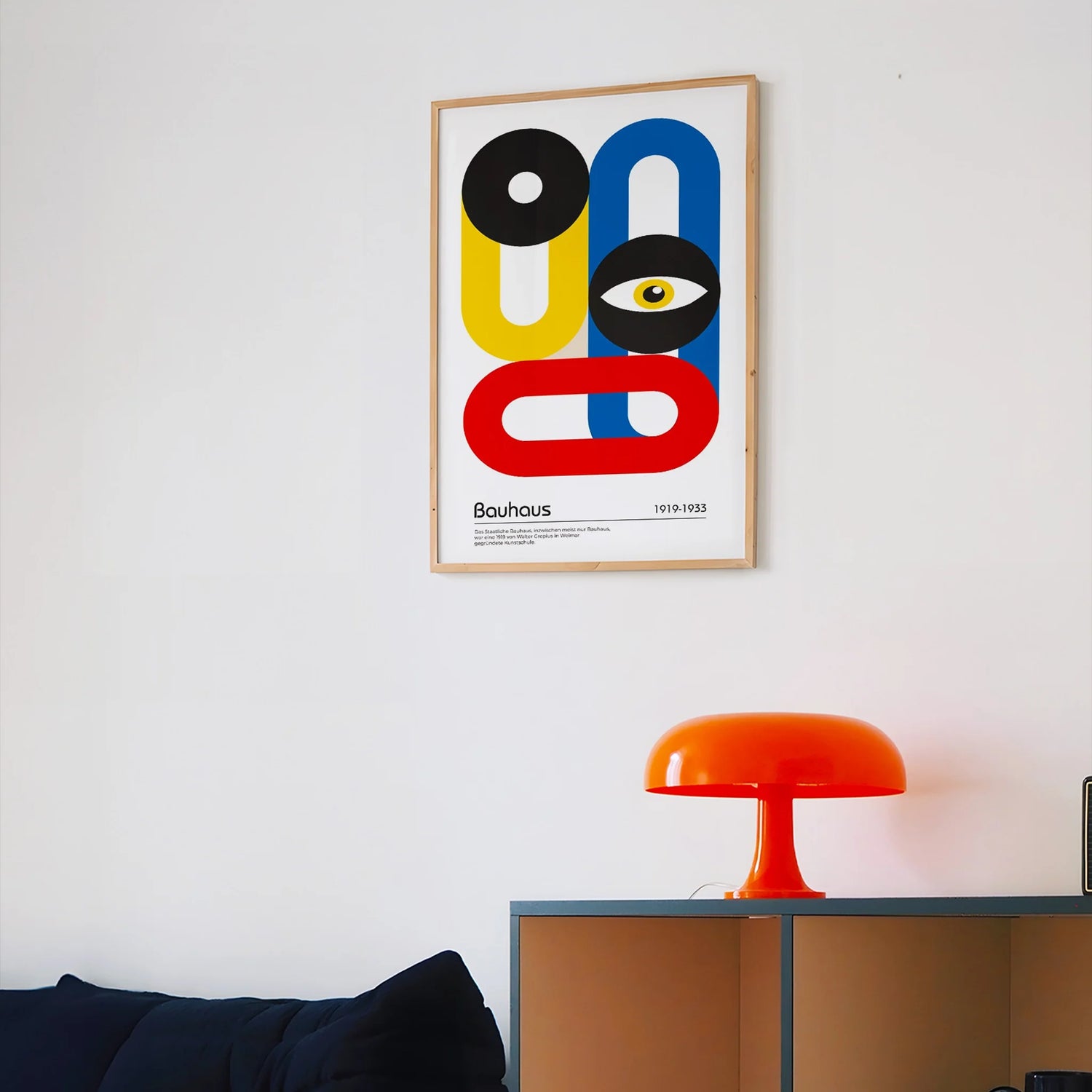
Bauhaus Iconic Figures
The Bauhaus, as an avant-garde movement in art, architecture, and design, owes much of its enduring influence to its key figures. These iconic figures not only contributed to the evolution of the Bauhaus, but also left an indelible mark on their respective disciplines. This article explores the lives and works of these pioneers, highlighting their essential contributions to the Bauhaus and modern art.
Walter Gropius
Biography and role as founder: Born in 1883 in Berlin, Walter Gropius was an architect and founder of the Bauhaus. After studying architecture, he worked for Peter Behrens, another pioneer of modernism.
Contributions to Bauhaus architecture and pedagogy: In 1919, Gropius founded the Bauhaus in Weimar with a revolutionary vision of the unification of art, craftsmanship, and technology. He developed an innovative educational program, integrating practical workshops and theoretical courses.
Notable works and projects: Gropius is known for his modern architectural works such as the Bauhaus building in Dessau and the masters' houses. His ideas have influenced generations of architects and designers.
Ludwig Mies van der Rohe
Biography and Bauhaus period: Born in 1886 in Aachen, Ludwig Mies van der Rohe became director of the Bauhaus in 1930, succeeding Hannes Meyer. He directed the school until its closure in 1933.
Contributions to Modernist Architecture: Mies was a pioneer of modernist architecture, advocating the principle "less is more". He developed a pared-down style, using industrial materials such as glass and steel.
Iconic works: Among his most famous works are the German Pavilion for the Barcelona International Exhibition in 1929 and the Farnsworth House, which embody his minimalist and functional approach.
Paul Klee
Biography and teaching at the Bauhaus: Born in 1879 in Switzerland, Paul Klee was a painter and art theorist. He joined the Bauhaus in 1921 and taught there until 1931, influencing many students with his innovative ideas.
Artistic approach and influence on students: Klee developed a unique artistic approach, combining abstraction and figuration with a deep exploration of color and form. His pedagogical theories on art and nature inspired many students.
Major Works and Contributions: Klee's works, such as "Ad Parnassum" and "Senecio", are examples of his imaginative use of color and form, and his ability to fuse different stylistic elements.
Wassily Kandinsky
Biography and role at the Bauhaus: Born in 1866 in Russia, Wassily Kandinsky was a painter and art theorist, often considered one of the pioneers of abstraction. He joined the Bauhaus in 1922, where he taught until 1933.
Theories of art and color: Kandinsky developed theories on the emotional significance of colors and shapes, exploring their ability to express deep feelings. His ideas on abstract art influenced many contemporaries.
Notable Works and Influence: His iconic works include "Composition VIII" and "Yellow-Red-Blue," which illustrate his exploration of geometric abstraction and color. His theories and works continue to influence modern art.
Laszlo Moholy-Nagy
Biography and Innovations at the Bauhaus: Born in 1895 in Hungary, László Moholy-Nagy was a versatile artist and innovator in photography, industrial design, and typography. He joined the Bauhaus in 1923 and remained there until 1928.
Work on photomontage, typography and industrial design: Moholy-Nagy introduced innovative techniques such as photogram and photomontage, and developed modern typefaces. His integrated approach to art and technology was revolutionary.
Post-Bauhaus Legacy and Impact: After the Bauhaus, Moholy-Nagy emigrated to the United States where he founded the New Bauhaus in Chicago, continuing to promote Bauhaus principles and influencing the American art scene.
Marcel Breuer
Biography and training at the Bauhaus: Born in 1902 in Hungary, Marcel Breuer studied at the Bauhaus and became one of the most innovative furniture designers of his time.
Innovations in furniture design: Breuer is known for his tubular steel furniture, including the Wassily chair and the Cesca chair, which combine lightness, durability and modern aesthetics.
Famous Works and Contributions to Architecture: In addition to his furniture, Breuer also contributed to architecture, with buildings such as the Whitney Museum of American Art in New York City exemplifying his bold, modernist approach.
Gunta Stölzl
Biography and direction of the textile workshop: Born in 1897 in Germany, Gunta Stölzl was a textile designer who played a crucial role at the Bauhaus. She directed the textile workshop from 1927 to 1931.
Innovations in textile design: Stölzl develops innovative textiles, combining geometric patterns and avant-garde weaving techniques. His creations are both aesthetic and functional.
Works and impact on contemporary textile design: Stölzl's works continue to influence modern textile design, with designs such as his tapestries exemplifying the technical and artistic excellence of the Bauhaus.
Hannes Meyer
Biography and direction of the Bauhaus after Gropius: Born in 1889 in Switzerland, Hannes Meyer succeeded Walter Gropius as director of the Bauhaus in 1928. His pragmatic and social approach to architecture influenced the direction of the school.
Educational and philosophical contributions: Meyer emphasizes the social aspects of architecture and design, advocating practical solutions to housing and urban planning problems.
Projects and controversies: His projects, such as workers' housing, are marked by their functionality and accessibility. However, his radical ideas and political orientation led to his departure in 1930.
Anni Albers
Biography and career at the Bauhaus: Born in 1899 in Germany, Anni Albers was a textile artist who studied and taught at the Bauhaus. She was married to Josef Albers, another prominent member of the Bauhaus.
Textile Design and Teaching: Albers creates innovative textiles, exploring new weaving techniques and varied materials. His works combine modern aesthetics and functionality.
Influence and Legacy: Anni Albers emigrated to the United States where she continued to design and teach, becoming a central figure in modern textile design. Her works and writings remain influential in the field of textiles.
Conclusion
Bauhaus’s iconic figures each helped shape the school and spread its revolutionary ideas. Their works and teachings transformed the worlds of art, architecture, and design, leaving a legacy that continues to inspire and influence today.
Bibliography and Sources
- Droste, Magdalena. Bauhaus 1919-1933 . Taschen, 2002.
- Whitford, Frank. Bauhaus . Thames & Hudson, 1984.
- Wick, Rainer K. Teaching at the Bauhaus . Hatje Cantz, 2000.
- Bayer, Herbert, Walter Gropius, and Ise Gropius, eds. Bauhaus 1919-1928 . The Museum of Modern Art, 1938.
